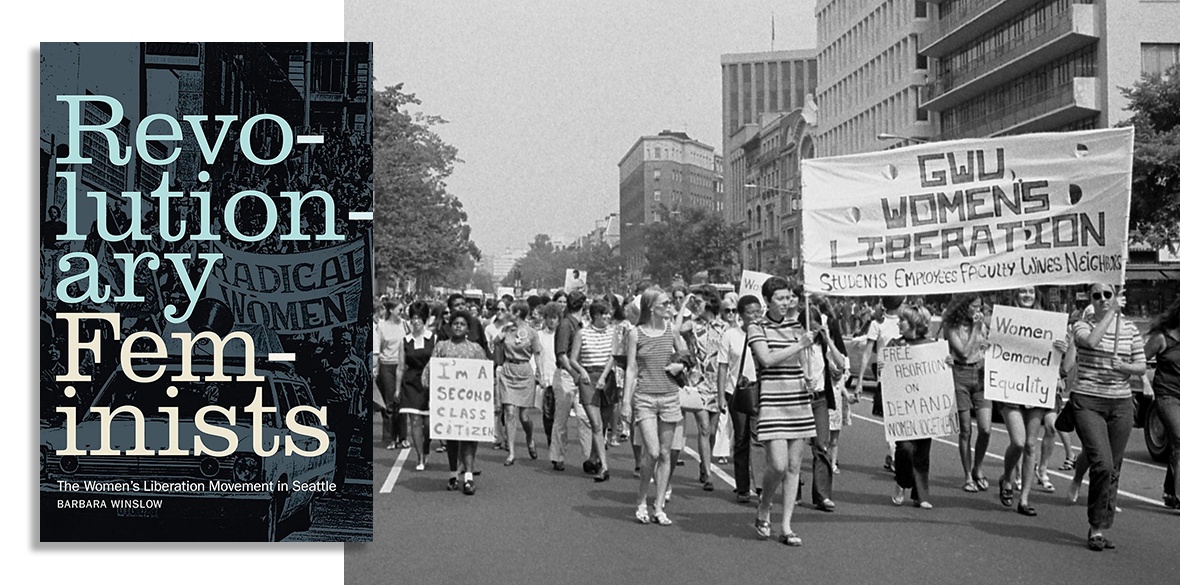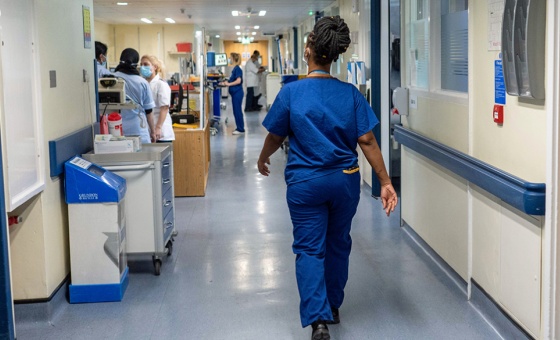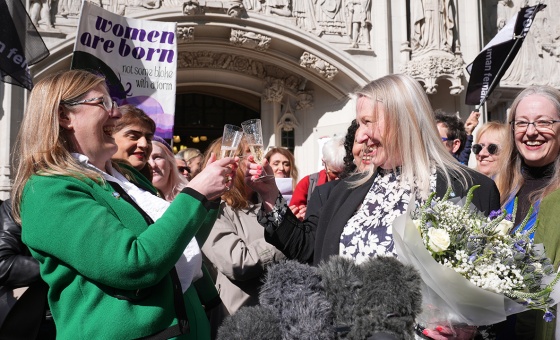This is the last article you can read this month
You can read more article this month
You can read more articles this month
Sorry your limit is up for this month
Reset on:
Please help support the Morning Star by subscribing here
Revolutionary Feminists: The Women’s Liberation Movement in Seattle
Barbara Winslow
Duke University Press, £22.99
LIKE most of the liberation movements of the period we call the 1960s, the women’s liberation movement seems a shadow of its former self.
In a manner similar to those other movements, the politics of what’s known as second-stage feminism have shifted rightward. This is in part due to the non-stop attacks on women’s rights by the right-wing patriarchal forces in the United States — from the Catholic church hierarchy to the Republican Party and its adherents.
Equally important, though, is the fact that the liberal wing of mainstream US politics has yet to make many women’s rights legally protected in a way that prevents the reactionaries from curtailing those rights. Instead, issues crucial to women’s liberation like reproductive rights and pay equity tend to be reduced to Democratic talking points during elections.
Other factors in this rightward shift go deeper. Perhaps foremost among these causes is the predominantly bourgeois nature of the women’s movement and its consequent focus on the individual instead of the group.
This latter, more fundamental, cause can be traced back to the movement’s origins in the early 1960s. Those origins reflected the concerns of the US middle class: suburban ennui, sexual harassment at work and elsewhere, women’s restrictions in public and the workplace and sexual freedom.
It’s not that these weren’t important issues, but they reflected the concerns of women who did not have to worry about a place to live or how they were going to feed their family. Furthermore, they did not address the gross racial discrimination that existed in the United States at the time.
Indeed, as Barbara Winslow makes clear in her new book Revolutionary Feminists: The Women’s Liberation Movement in Seattle, it wasn’t until women from the considerably more left and more radical anti-war/anti-imperialist and anti-racist movements began forming women’s liberation groups and caucuses that the more fundamental issues regarding women’s oppression began to inform the direction of the movement.
As her title makes clear, Winslow’s narrative focuses on the movement in the Seattle, Washington, area. It is a story of strong-willed individuals, socialist organisations and sects and a constant battle with sexism in mainstream society and on the left.
That battle was against individuals and institutions. Some of the most sexist individuals were not in the larger society, but within the left and its associated movements. While Winslow makes certain to make this fact clear, she does so in a manner which approaches it in terms of the historical and political moment. Of course, those individuals whose chauvinism was, for the lack of a better term, over the top, are named as they should be.
Revolutionary Feminists details the three organisations most involved in the development of the Seattle women’s liberation movement. All three had connections via individual members and organisationally to larger socialist groups: Radical Women, which was linked to the Freedom Socialist Party Bolshevik; Campus Women’s Liberation, which was linked to the Socialist Workers Party (SWP) and Young Socialist Alliance (YSA); and Women’s Liberation-Seattle (WL-S), which had ties to many anti-imperialist, Maoist and Stalinist left.
Winslow does an excellent job explaining the lineage of these organisations and the organisations from which they sprang. In doing so, she can’t help but discuss the sexist experience of women across the United States who were organising against the war in Vietnam and for black liberation.
Those experiences revealed themselves in Seattle in often explicitly hostile terms. In fact, the sexism of the Seattle Liberation Front (SLF) leadership was so vicious, many women in the Seattle left refused to support their defence after they were arrested during an action protesting the conviction of the Chicago 7 in February 1970.
Eleanor Marx and Edward Aveling wrote in an 1886 article for The Westminster Review titled The Woman Question that: “Women are the creatures of an organized tyranny of men, as the workers are the creatures of an organised tyranny of men, as the workers are the creatures of an organized tyranny of idlers. Both the oppressed classes, women and the immediate producers, must understand that their emancipation will come from themselves. Women will find allies in the better sort of men, as the labourers are finding allies among the philosophers, artists, and poets. But the one has nothing to hope from man as a whole, and the other has nothing to hope from the middle class as a whole.”
It seems fair to say that these sentences provided a basis (if not the basis) for the women of the US left determined to organise for their liberation. Given the heterosexism and male supremacy that dominated US culture (and most every other culture) in the 1960s and 1970s, the fact that leftist women ran into so much resistance from their male comrades should not be surprising.
The fact that that resistance was echoed by women on the left perhaps might be.
Winslow suggests that the peak of Seattle radical feminism ran from 1969 to about 1972. She divides her book into chapters highlighting the issues of the day — the war, healthcare, reproductive rights and the equal rights amendment, to name a few — and the role the radical feminists played in them.
I would argue that the chapter that is the most important and would not have even have existed if it weren’t for the women’s liberation movement is reproductive rights. Not only is this chapter important for the history it provides regarding the fight to legalise abortion and other forms of contraception, it is important for the present, now that reproductive rights are once again under assault from a coalition of churches, reactionary politicians and certain sectors of capital. Revolutionary Feminists revisits the debates and describes the organising, detailing the actions and the reaction to the movement and its arguments.
Winslow has produced a valiant testament to radical women, left-wing feminism and the city of Seattle. It is a history that needed to be told. It is also one that reminds the reader how sexist US society truly was 50 years ago. In doing this, it also reminds us of how sexist it still is.
Her role as an organiser and participant in the movement most certainly informed the history she provides. Together with the experience and wisdom accrued over time, the resulting text stands as a crucial addition to the already expansive library focused on that period we still call the 1960s.
Ron Jacobs is the author of Daydream Sunset: Sixties Counterculture in the Seventies (CounterPunch Books, 2015). His new book, Nowhere Land: Journeys Through a Broken Nation is coming out in Spring 2024. He lives in Vermont. He can be reached at [email protected].










